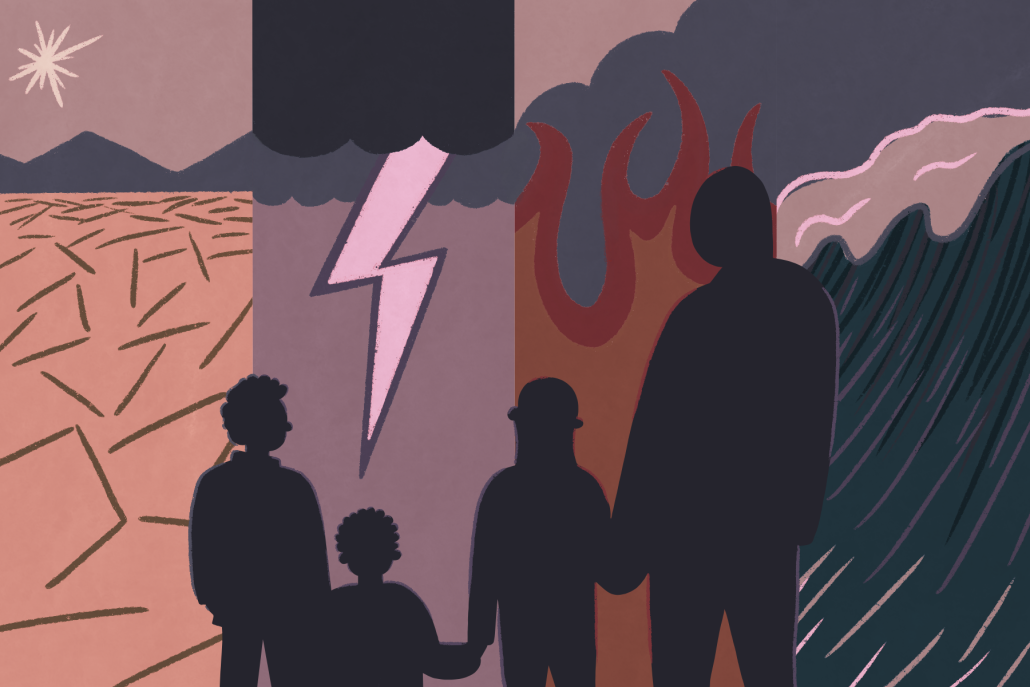Triple Bottom Line: Home is where the resources are
We often talk about reversing anthropogenic climate change before it’s too late. But, if this year’s climate conference told us anything, we still refuse to accept the direness of the situation.
Each year, without fail, we push back our emissions-reductions deadlines and lower our expectations for change in the name of preserving the global economic status quo. If we can outsource extra freshwater or rely on nonrenewable energy for a few more decades, what’s the rush in shaking things up?
However, in many places around the world, these near-future apocalyptic predictions are already a reality — climate change’s first victims have already suffered irreversible damage. Climate-induced migration is well underway, impacting some of the world’s most vulnerable regions and communities. Although many of us in Southern California can fend off the warming climate’s effects with good AC and diverted freshwater sources for the time being, climate change will inevitably impact all of us at some point.
Migration and immigration are already hot-button issues, and it can be difficult to thoroughly define people’s reasons for moving. The term “climate refugee” connotes the issue in absolute terms, suggesting that the group is entitled to refugee rights. The term, mainly used by the media, is misleading because most climate-linked migration occurs countrywide rather than internationally. Additionally, the United Nations doesn’t recognize climate change as a viable cause for legal refugee status.
For the sake of simplicity, I’m casting the widest net possible today. Climate-induced migration’s scope includes displacement because of climate-related changes such as sea level rise, desertification, ocean acidification, air pollution, changing weather patterns and intensified storms, the loss of biodiversity and humanitarian crises exacerbated by climate change.
When it comes to media coverage of climate migration, the Pacific Island nations are a prime example. Sea levels have been rising at a rate of 12 millimeters per year in the western Pacific, slowly submerging low-lying islands and prompting an exodus to larger countries in their general vicinity.
Particularly, residents on the islands of Kiribati and Tuvalu, which are located only meters above sea level, face time-sensitive decisions about whether to remain on their sinking island or emigrate to nearby Australia or New Zealand, where job opportunities and sense of Pacific Island community are limited.
Despite the situation’s severity, these tiny islands have little to no influence over global climate proceedings and minimal representation in climate summits. Many people who live in climate-induced migration areas around the world reflect this pattern as the canary in the coal mine so to speak. Their plight only moderately concerns larger nations and more powerful entities.
In many existing cases of climate migration, experts consider climate change a “threat multiplier,” exacerbating countries’ existing systemic issues. Climate-driven food and water insecurity can increase conflict over resources, consequently inciting violence and sometimes wars.
For example, prolonged drought in Syria drove farmers and herders into overly-crowded urban areas, creating conditions for unrest that preceded their civil war. Similarly, Yemen’s citizens are highly vulnerable to drought, pests and rainfall patterns because much of the country’s economy depends on agriculture and rural resources, accelerating social differentiation and further cementing climate warming’s negative impacts.
Although it’s unrealistic to designate migration patterns as solely driven by environmental factors, the number of migrants will likely continue to rise as environmental conditions change and place undue stress in areas that don’t have the resources or infrastructure to counteract them.
At some point, a significant percentage of the global population may fall under the “climate migrant” umbrella after moving for better opportunities, more comfortable living environments or safety from severe weather events.
What do we do when climate change displaces a majority of the world’s population? Whether migrants move inland to escape rising tides or leave a region lacking arable soil for crop production, human-caused climate changes do not only impact how we live our lives but also where we can realistically live them.
Climate disruption not only makes world regions uninhabitable, but also compounds both food and water availability, which places pressure on the global supply chain. Not to mention the fact that forced migration impacts many irreplaceable intangible factors — culture, sense of community and traditions can be lost as we prioritize survival.
Climate change magnifies existing vulnerabilities, and moving away from an impacted area doesn’t necessarily guarantee a lack of problems moving forward. People will inevitably come to urban areas, and it would be in powerful countries’ best interests to strengthen infrastructure and prevent overcrowding.
Simultaneously tackling adaptation and mitigation is a huge task, but powerful countries must involve local communities and empower those in developing nations and affected regions. All too often, global leaders fail to consider affected constituents in decision-making, which leads to ineffective policy.
Establishing realistic, accessible and permanent pathways of migration while reducing emissions is the only way to go from here. Highly-trafficked countries and areas may protest, but at the end of the day, we’re a global community facing a global problem. The climate diaspora may have already begun, but we need to look beyond our own national self-interests and recognize that the stakes are bigger than any arbitrary political boundary.
Montana Denton is a senior writing about environmental issues, sustainability and society. Her column, “Triple Bottom Line,” ran every other Wednesday.


